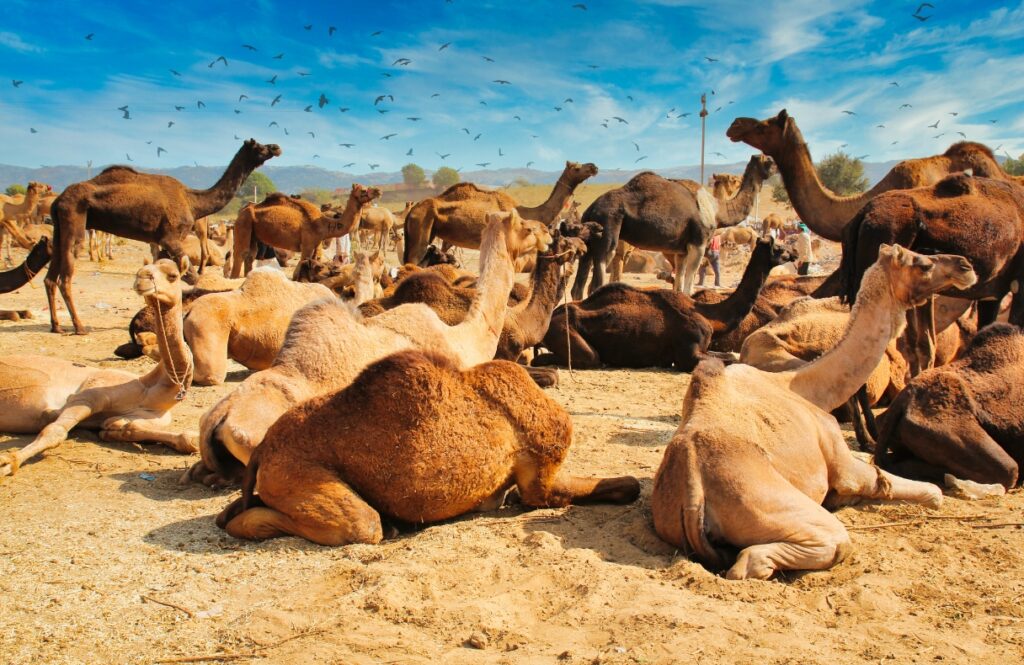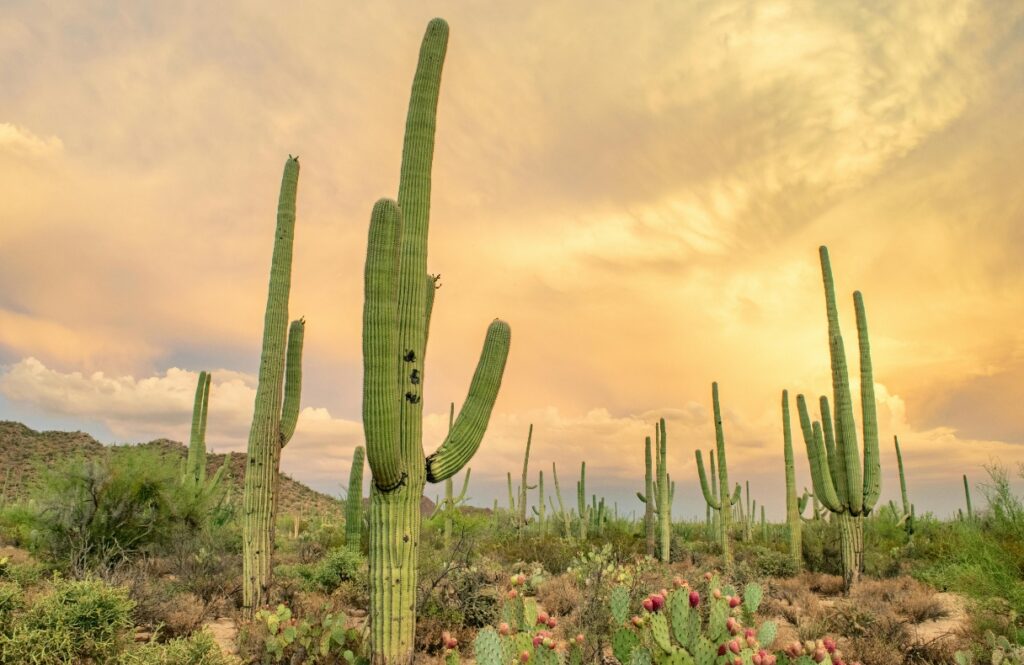Sharjah Desert Park – Sharjah Zoo and Heritage: A Journey Through Nature and Time
A destination in the vast UAE desert unites the wild nature of the region to ancient cultural wisdom. Sharjah Zoo holds its place within the 1,000-hectare Sharjah Desert Park complex together with the Arabian wildlife preserve and an extensive collection of cultural heritage displays. The park resides beyond city lights to provide guests with an in-depth experience of Emirati natural history and cultural heritage. Sharjah Desert Park welcomes all visitors who wish to explore their fascination with wildlife and history or family education by letting them walk among desert sands that teach how the region survived and adjusted while keeping its traditions alive.
Sharjah Zoo: A Sanctuary for Desert Wildlife
Sharjah Zoo, the crown jewel of Sharjah Desert Park, stands apart from conventional zoos. His Highness Dr. Sheikh Sultan bin Muhammad Al Qasimi established the zoo in 1997 through his vision to protect Arabian Peninsula species while providing educational opportunities for visitors. In contrast to zoos that spotlight exotic foreign species Sharjah Zoo exclusively presents animals which either succeed or fail in surviving the desert conditions. The zoo’s strategic organization allows people to develop meaningful bonds with the area’s natural components.
The zoo positions its open environments like natural habitats because both physical health and mental peace flourish in such environments. Sharjah Zoo proudly holds the Arabian leopard whose status as one of the world’s rarest big cats continues to make it a distinguished resident. This vulnerable predator survives today because fewer than 200 members remain in the wild while the zoo operates its vital breeding initiative. Nature lovers adore witnessing the Arabian oryx because this species became endangered to the point of extinction in the wild yet thriving conservation work brought them back from disappearance. These elegant antelope creatures roaming across the desert with their extended horn points serve as direct evidence of both natural susceptibility and human accountability.
Several desert-adapted species at the attraction include the sand gazelle together with the striped hyena and Nubian ibex. The zoo’s avian department displays lappet-faced vultures and barn owls as raptors and reptile sections show desert monitor lizards and horned vipers. The public can learn more about wild animal behavior through direct feeding engagements and animal keeper explanations.

Beyond the Zoo: The Desert Park’s Cultural Heart
The Sharjah Desert Park is more than just an ordinary zoo. It integrates cultural heritage across its displays. Next to the zoo, you will find the Sharjah Natural History and Botanical Museum and the Arabian Wildlife Centre. They offer deep dives into the past. The museum’s displays follow the UAE’s geological history. You can see marine fossils from long ago to the making of famous sand dunes. Inside, visitors enjoy shows of ancient lands with fun dinosaur robots that kids love. They also have many meteorites and gems that show off the region’s geological riches.
The Botanical Museum displays a focus on plant life by presenting the remarkable ways desert plants survive in their environment. The arid local environment is reflected in the life force of desert plants like the deep-rooting ghaf trees and water-storing succulents which represent the quiet nature of survival in dry landscapes. The exhibit shows how Bedouins in past times employed plants to meet their shelter and nutritional requirements and medicinal needs through an amalgamation of scientific and cultural knowledge.
At the Heritage Village visitors experience a recreated Bedouin settlement which recreates desert survival techniques used during times of absolute dependence on desert harmony. Falaj irrigation systems and barasti mud-brick houses coexist to demonstrate the historical methods of water preservation. The artisans showcase their craftsmanship in pottery-making and metal and weaving work while storytellers share desert stories in the shaded area made from palm fronds. The preserved time capsule allows people to engage with Bedouin traditions while experiencing their sensory dimensions.
Planning Your Visit: Tips for an Enriching Experience
A few essentials will help you maximize your visit at Sharjah Desert Park by following these recommendations:
- Timing: Visitors can access Sharjah Desert Park from Saturday through Thursday with hours between 9:00 AM to 5:30 PM while the park remains open from 2:00 PM to 5:30 PM on Fridays. The winter period between October and April presents moderate weather which suits outdoor exploration in the park. Early arrival time will allow you to miss both hot weather conditions and heavy visitor traffic.
- Get your tickets: The fees to enter are not high. Kids and groups get discounts. You can buy tickets for the zoo, museums, and heritage village together to save money. Look at the park’s website for deals or events.
- Wear comfy clothes: Choose light and airy outfits, a big hat, and strong shoes for walking. The zoo paths have some shade, but the desert sun is very strong.
- Amenities: Visitors can find convenience at the park through the cafeteria which serves food but it is advisable to bring your own meal to enjoy in provided picnic spaces. Users can take advantage of large-scale on-site parking that provides free facilities.
- Guided Tours: A guided tour provides professional knowledge about zoo conservation efforts and heritage village background. The facility provides tours in different spoken languages.
A Day at Sharjah Zoo: A Sample Itinerary
The Arabian Wildlife Centre serves as your first attraction to experience while enjoying morning wildlife activation. You can observe Arabian leopards walking within their rocky housing while listening to the eerie sounds produced by lappet-faced vultures. Children visiting the Children’s Farm can experience both goat feeding and donkey grooming activities. The Natural History Museum provides refuge in the afternoon so guests can witness its collections of meteorites and dinosaurs. Take some time for lunch under pergola roofs before discovering the artisans demonstrating date-palm weaving in Heritage Village. Read the desert flora secrets at the Botanical Museum as your day comes to a close.

Why Sharjah Desert Park Matters
The mass modernization worldwide makes Sharjah Desert Park essential because it creates links that preserve cultural heritage for present and future generations. Through its native-animated exhibits the zoo invites people to reconsider how they relate to regional ecosystems while heritage sections demonstrate historical desert-dweller innovativeness before urban development. The emirate of Sharjah has publicly declared its commitment to tradition and duty to protect nature through this cultural facility.
Conclusion: Where Wilderness and Wisdom Converge
The Sharjah Desert Park serves as an interactive experience which brings together desert natural beauty with its living species and traditional knowledge with modern scientific understanding. After departure the combination of the oryx calls and frankincense odor stays in your mind while your understanding of Arabian spirituality deepens. The futuristic ambitions of the region surrender before the authentic marvels which exist in the wilderness and historical remnants of Sharjah Zoo alongside its heritage park companions. You can find the desert’s eternal spirit by planning your visit to Sharjah Desert Park alongside a gentle sand step entry.

